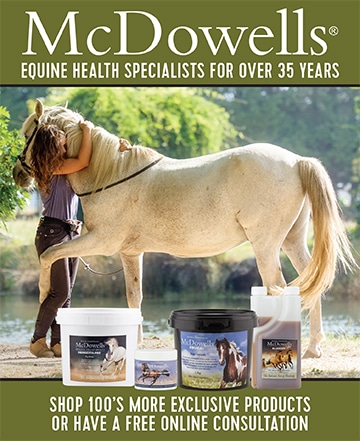It may sometimes be overlooked in favour of ridden exercises, but good groundwork can play a vital role in both starting and continuing a horse’s education.
Darwin-based trainer Fiona Bond of Red Gum Equine began riding at Pony Club in Victoria before delving into horsemanship with different trainers around Australia.
She uses groundwork as a way to introduce the horse to what’s expected of them under saddle, but notes that good ground manners are also important for safety reasons and can be used to improve a horse’s posture and responsiveness to the aids in general.
But like everything else when it comes to working with horses, it’s as much about the handler as it is the horse.
1. Building body awareness
Body awareness is important both on and off the horse. Horses are extremely perceptive to the handler’s body language, and Fiona finds one of the challenges people can face is increasing their energy levels enough to evoke a response.
Developing an awareness of your own body language is one of the first steps when it comes to working with any animal – and with that also comes a feel for good timing. All aids needs to be consistent and the pressure needs to be released immediately for the training to be effective, even if it is only a single step in a movement when starting out.

2. Backing up
One of the early exercises Fiona works on is ensuring a horse will back up easily. She recommends using a rope halter and shaking the leadrope from the front of the horse. If the horse braces against the aid she continues to ask in the same way – rather than becoming more forceful – but ensures she can release the pressure as soon as there is a response. To begin with this may be just a slight shift in weight back onto the hindquarters, but the exercise can be repeated over time until the horse willingly steps backward in a good rhythm. She also teaches the horse to move backward off a steady pressure on their nose and chest. Like the rope method, consistency is key, and it’s important to release the pressure as soon as the horse attempts to move in the right direction.

3. Mounting etiquette
Standing still while being mounted is another skill that needs to be reinforced. Fiona says it’s important not to yield to the horse if it shifts. She notes that a lot of people will walk around the horse and reposition if it takes a step, instead of standing firm and teaching the horse to move up to the correct place for mounting. She also makes a point of testing her training by getting on using different objects and places.
4. Lateral flexion
Fiona’s aim is to have the horse flex both sides to pressure in both a halter and a bridle. As well as improving suppleness, the exercise teaches the horse to respond to a light aid and is a continuation of what is asked of the horse under saddle.
5. Repositioning the feet
Being able to move the horse’s shoulders and hindquarters independently is important both on the ground and under saddle. Fiona favours the use of a flag as an extension of her arm and aims to have the horse move away from the pressure. Moving the hindquarters and encouraging the inside hind leg to swing is the first step to achieving proper engagement, which can then be continued under saddle.
“In all the groundwork we are wanting to establish being able to direct their feet willingly on the ground so we can have that available to us under saddle,” she said.



